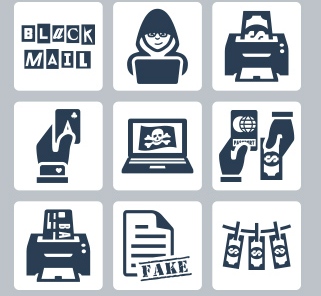
6 julio, 2020 /Artículos /admin/
In the past months, several domestic and international regulators and watchdogs have issued warnings regarding potential impacts of the COVID-19 pandemic on financial crime. The president of the Financial Action Task Force encouraged responsible digital customer onboarding and delivery of digital financial services in light of current social distancing measures. He also called for greater transparency in both international financial transactions and nonprofit activity—as critical relief will be needed domestically and beyond—by applying appropriate levels of risk-based due diligence.1 Moreover, authorities were encouraged to develop mechanisms by which victims, financial institutions (FIs) and other businesses can report fraud related to COVID-19.
Similarly, Interpol issued a warning regarding two types of COVID-19 fraud schemes.2 The first is telephone fraud, where criminals call victims pretending to be clinic or hospital officials requesting medical treatment payments for a relative of the victim that has fallen sick with the virus. The second is phishing, where emails claiming to be from national or global health authorities are sent to trick victims into providing personal credentials or payment details, or to open an attachment containing malware.
While these pandemic-specific warnings are all important, it is crucial to highlight the more “classic” money laundering risks emerging as a result of COVID-19. The 2008 financial crisis is a good reference point to identify growing vulnerabilities of the financial system during such periods and address them vigilantly. One such risk is organized crime abusing the financial system. During the 2008 crisis, former United Nations Office of Drugs and Crime Executive Director Antonio Maria Costa warned that “stupid and diabolic” bank behavior as a result of the financial crisis allowed transnational mafia drug money to enter the financial system, estimated then at $320 billion annually. “With the financial crisis, banks became desperate for cash, and one of the few sources of liquidity these days is the transnational mafia,” he claimed, based on intelligence from several jurisdictions that did not make this public.3
While these numbers might be exaggerated, there is no doubt that organized crime groups benefit from crises and chaotic situations. Unemployment and credit restrictions create conditions that are favorable to criminal exploitation. For example, many jurisdictions see the return of mafia-style loan sharking. Whenever a financial crisis emerges, many borrowers are rejected by the banks and seek alternatives. Organized crime has an advantage in “efficient” loan collecting and thrives from these borrowers in need.
Another well-known money laundering typology is cooking the books and the manipulation of losses during financial crises. These methods can assist sophisticated money launderers when entering illicit gains into the financial system while evading taxes, considered a laundering “premium” on a regular day.4 Trade-based money laundering is especially vulnerable in this crisis, as a result of unusual hyperfluctuation of markets as well as the prices of goods and commodities.5
Another potential vulnerability during a financial crisis is severe budget cuts in both the public service and the private sectors. Public service budget cuts affect the quality of financial investigations conducted by the police, as well as the capacity for effective financial supervision by regulators. In such times, focus is naturally given to public safety, allowing financial crime to thrive. With regard to the private sector, budget cuts are bound to hit compliance. FIs will be expected to focus on maintaining their business in the short term, even if that means neglecting long-term reputational risks and other risks of noncompliance.
What can be done? First is raising awareness. Understand that although the COVID-19 pandemic is unique, any financial crisis to follow is bound to bring back well-known money laundering risks.
After acknowledging this, all risk assessments—national, sectorial and institutional—need to be updated and risk-based mitigating measures need to be applied. This could include enhanced due diligence for unusual transactions with COVID-19-related explanations, measures to prevent oversight, tightening supervision on nonbank lending, and increased focus on potential trade-based money laundering.